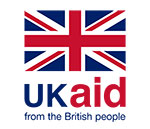During the pandemic, SMS and apps have been largely used for surveillance and monitoring of the spread of COVID-19 cases, helping to track infections and identify outbreaks, while measuring the rate of disease spread.
The use of mobile technology in disease surveillance is not a new trend. For many years, mobile applications have been implemented for the surveillance of human and animal diseases in low- and middle-income countries (LMICs). This has been the case for the detection of infectious and vector-borne disease outbreaks, such as Tuberculosis, Zika, Dengue, Chikungunya and Malaria. The COVID-19 pandemic has only accelerated the adoption of mobile and frontier technologies in the health sector.
There is a risk that the adoption of digital technologies for disease surveillance continues to be fragmented and that efforts remain uncoordinated. It is critical that further innovations are integrated into the broader systems of disease surveillance. This blog explores how mobile and digital technologies are used for disease surveillance and highlights the challenges facing LMICs.
Disease surveillance systems are complex and require interactions at multiple levels of care
Disease surveillance is a critical component of a functioning health system that helps detect diseases, control outbreaks to prevent infections, and evaluate the effects of interventions. Adequate disease surveillance systems can help reduce national and international health emergencies by preventing outbreaks from escalating (see figure 1).

Most countries have disease surveillance systems in place, and legislations and regulations exist that provide a framework for their implementation, including the International Health Regulations 2005. But adequate implementation of disease surveillance systems requires trained staff, such as infection control personnel, who are often unavailable in LMICs. In addition, accurate and reliable data is lacking, causing countries to be unable to detect outbreaks in time and contain the spread of infections.
Digital solutions can help LMICs strengthen their systems for disease surveillance
Digital and mobile technologies are helping national health systems address issues often experienced in the implementation of disease surveillance systems, such as communication challenges between key stakeholders and the collection and analysis of data, as well as reporting. For instance, in Kenya, health workers in subnational health facilities use SMS to report cases and share data to sub-county level officers, who compile the data and report back to the national database.
Digitals tools have also helped monitor neglected diseases. For example, Netherlands Leprosy Relief developed the mobile phone application SkinApp to recognise the early signs and symptoms of skin diseases. The app is used in Ethiopia, Mozambique, Tanzania and Nigeria. Digital solutions have also been implemented to support One Health approaches to public health – those in which animal and human health are monitored. In Tanzania, AfyaData is a mobile-based tool that allows community health reporters and officials from the animal and health sectors to collect real-time disease events data and report it to central authorities.
Integration into healthcare systems is a prerequisite for successful solutions
The increasing penetration of smartphones and rising use of technologies such as big data and AI in LMICs opens interesting and new ways in which disease surveillance systems could be implemented. As demonstrated during the COVID-19 pandemic, a high degree of adaptivity to the changing needs of users is crucial for all digital health innovations, including those that use frontier technologies. For disease surveillance solutions specifically, to genuinely address healthcare challenges they must be integrated into healthcare systems. This will be critical to ensure that, globally, we are prepared for future health emergencies.
Prior to the pandemic, a vast range of digital innovations sprawled to address multiple challenges facing health systems, including those in disease surveillance. While these developments have been promising, the overall ecosystem has suffered from fragmentation and duplication of efforts, and from a lack of interoperable solutions.
The Central Insights unit at GSMA Mobile for Development is currently working with the UK Foreign, Commonwealth and Development Office to understand the role that mobile and digital technologies play to strengthen disease surveillance systems in the Philippines. We will soon launch a report with key findings and best practices. If you are interested in learning about this research, please contact us at [email protected].
THIS INITIATIVE IS CURRENTLY FUNDED BY THE UK FOREIGN, COMMONWEALTH & DEVELOPMENT OFFICE (FCDO), AND SUPPORTED BY THE GSMA AND ITS MEMBERS.



